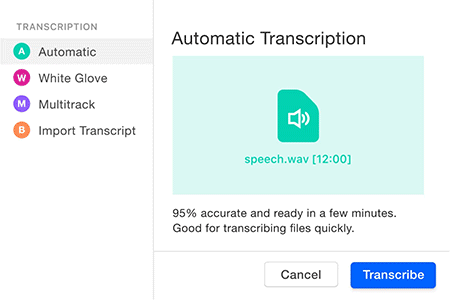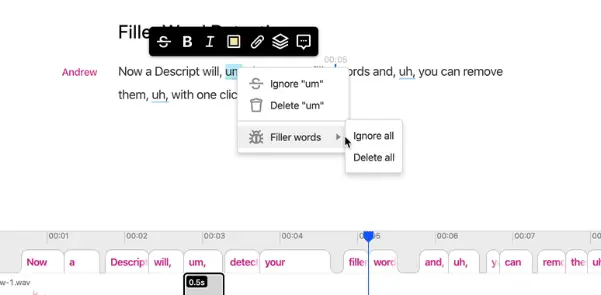Filler words can be a major problem in video content, and here is how to remove filler words from video content with AI software.
How to Identify Filler Words in Your Video Automatically
Are you tired of watching videos filled with "lol", "ums," "ahs," and "likes?" Do you find yourself becoming frustrated and losing interest in the message because of excessive filler words?
You're not alone.
The first step in removing filler words from your video is to identify them. You can do this by watching your video and taking note of the words or phrases that are used excessively.

Alternatively, you can use video to text transcription tool to extract the spoken words. The transcription will show exactly where these filler words are, simply by searching for it.
This will help clean up a minor mistake in a great video you were 99% perfect. Such as a scripted podcast, interview, E learning course. Filler words only take millisecond to completely ruin the smoothness of the content.
So removing them without having to re-do the whole project from the beginning is very helpful.
Steps To Edit Filler Words Out of Your Video
If you had an awesome interview that you would like to repurpose the video content for various reasons. Editing out the filler word is important so you don't have to re do the entire video.

Technologies like this didn't exist until now.
Descript AI is one of many AI tools that can transcribe a video using the Overdub feature. The editor can go into the editor and use the filler word detection tool to remove all filler words or even change what was said.
The final product will sound extremely smooth. Many content creators including podcasters and interviewers use this to run their businesses while saving time.
Ask yourself, will you use this tool to smooth out a recorded presentation that goes on the internet? if you said something weird or drop a couple filler words at the most important part of the video.

- First, import and transcribe your audio file using Descript
- Once the transcription is complete, Descript automatically underlines the detected filler words and phrases using a light-blue color. These words and phrases can be found in the "Filler Words" section in the left sidebar of the editor.
- To remove a filler word, simply click on the underlined word in the transcription. This will highlight the word and bring up a contextual menu.
- In the contextual menu, click on "Remove Filler Word." This will remove the filler word and join the two surrounding words together.
- Repeat this process for each filler word that needs to be removed from the transcription.
Common filler words:
- "uh"
- "um"
- "well"
- "hm"
- "so"
- "like"
- "kind of"
- "sort of"
- "I mean"
- "you know"
- "you know what I mean"
- "I suppose"
- "I guess"
- "right"
- "or something"
- "mmm"
- "you see"
- "but you know"
Should All Filler Words Be Removed?
When it comes to removing filler words from your content, it's important to keep the content type in mind. While it's acceptable to remove a few "um" sounds in most cases, removing too many filler words can make the speaker sound robotic and inauthentic, particularly in conversational or interview-style videos.
In these cases, it's best to leave some filler words in to maintain a more natural flow. However, for e-learning materials, removing all filler words is perfectly acceptable and may even enhance clarity and comprehension for the learner.

